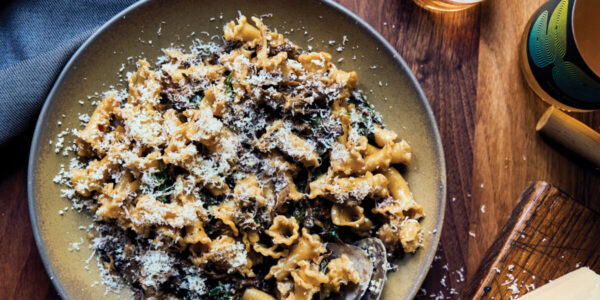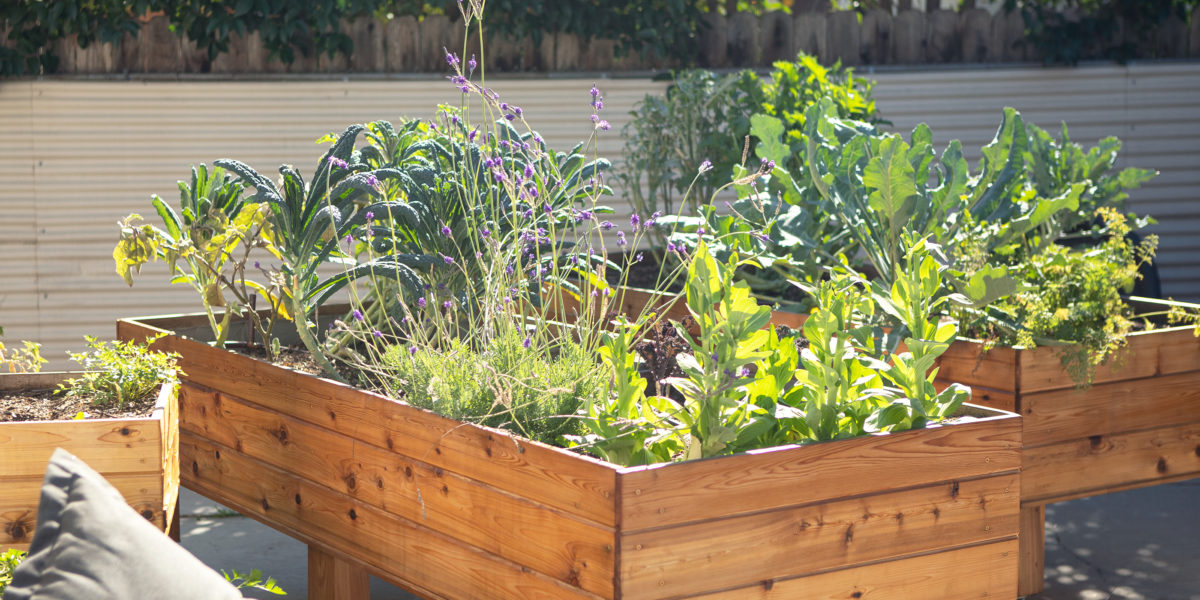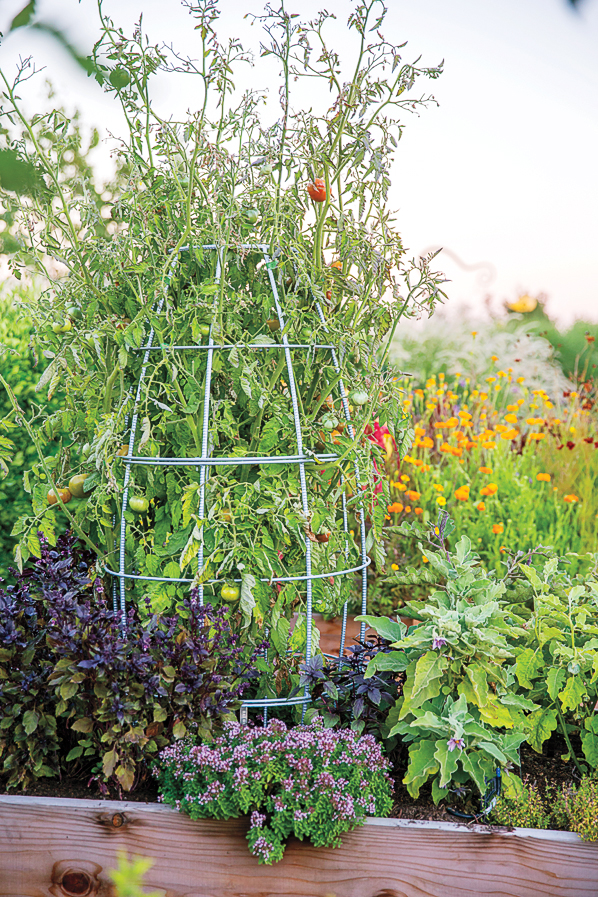
It’s Not Too Late to Plant These Veggies in Your Summer Garden
Missed the spring planting window? You’re not out of the growing game.

Raúl B Fernández
When it comes to the vegetable garden, high summer doesn’t mean you’ve missed your chance—it just means the planting rules change. With warm soil, long days, and a little strategic watering, July is prime time to tuck in heat-loving, drought-tolerant veggies that thrive in the Western sun. Whether you’ve got a patio container or a whole raised bed to fill, these plants are built for now—and for the climate realities we’re all gardening through. Fast, flavorful, and (mostly) fuss-free, here are our favorite picks and tips for seasonal gardening success.
Heat-Loving, Drought-Tolerant Veggies to Plant Now

Thomas J. Story
Think of July as your garden’s second act. While spring gets all the fanfare, high summer is when the heat-loving heroes finally get their moment. These plants not only tolerate the sun—they thrive in it. Whether you’re squeezing in a second round or starting from scratch, these fast-growing, low-water veggies are built for the job.
Armenian Cucumbers
Forget everything you know about cucumbers. Armenian cukes (technically melons!) grow long, twisty, and ribbed, with a mild, refreshing flavor that stays crisp even on the hottest days. They love the heat and won’t get bitter like traditional cucumbers. Direct sow them now and give them room to roam or climb—they’re fast, productive, and oddly charming.
Pole Beans
There’s a reason beans are a go-to for warm-season gardens: They grow quickly, love climbing, and need very little fuss. Pole beans like ‘Kentucky Wonder,’ ‘Blue Lake,’ or heirloom varieties such as ‘Scarlet Runner’ bring beauty and bounty. Just add a trellis or teepee, and you’ve got a living sculpture that feeds you.
Roselle Hibiscus (Hibiscus sabdariffa)
If you’re looking for something a little unexpected, this tropical showstopper is your pick. Roselle grows tall and lush, with tart, cranberry-like calyces that can be used for teas, jams, or syrups (hello, garden mocktails). It loves the heat, especially in Southern California, Arizona, and the Central Valley. Bonus: The burgundy stems and maple-shaped leaves add serious style to your plot.
Rainbow Chard
This cool-weather staple is surprisingly tough. When planted in July, it grows quickly in the heat, especially with a bit of afternoon shade. Harvest baby leaves often to keep plants tender and sweet. The neon stems look good in the garden and on your plate—chard is your heat-tolerant, cut-and-come-again MVP.
Zucchini (or Try Costata Romanesco)
If you’re a late-starter, zucchini will make you feel like a total garden rock star. Once it gets going, it really gets going. Plant seeds directly in the ground, mulch to conserve water, and get ready for more zukes than you know what to do with. For a twist, try Costata Romanesco—an Italian heirloom with ridges, better texture, and nuttier flavor.
Malabar Spinach
This isn’t your average spinach. Malabar is a tropical vine with glossy green leaves and deep pink stems that grow wild in the heat. It climbs, covers, and produces all summer, and the leaves are great in stir fries or raw in salads. Perfect for small spaces if you’ve got vertical support and a sunny spot.
How to Plant and Care for Late-Summer Vegetables

Thomas J. Story
1. Start with Warm Soil
July’s sun is your ally—no waiting for soil temps to rise. Direct sow most of these picks (no need for transplants). Seeds planted now will sprout quickly and grow with confidence, taking full advantage of summer’s long daylight hours. This is the shortcut season—less fuss, more results.
2. Water Deep, Not Often
Early-morning watering helps reduce evaporation. Add mulch (straw, compost, or shredded bark) to lock in moisture. Deep, infrequent watering encourages roots to grow down where it’s cooler and more stable. Think of mulch as your garden’s sunhat—it cools the soil, conserves water, and keeps weeds at bay.
3. Shade the Base, Not the Face
Use taller plants to shield roots and create microclimates—pole beans or tomatoes can provide afternoon shade for shorter companions. A little intentional plant placement can cool down an entire garden bed. When your garden mimics a layered ecosystem, everything thrives with less effort.
4. Containers Count
If your garden is on a balcony or a sunny stoop, you can still plant. Just choose deep pots, water regularly, and feed every couple of weeks. Warm-season crops like zucchini, beans, and chard grow beautifully in containers—you just need a little space and consistency. Treat your pots like mini raised beds, and they’ll return the favor with homegrown abundance.
Harvesting Hacks

Thomas J. Story
1. Fast Growers, Fast Gratification
Many of these plants germinate in under a week and produce in under 60 days—ideal for impatient or first-time gardeners. You don’t have to wait all season for rewards—beans, zucchini, and Armenian cucumbers are overachievers when it comes to speed. It’s the perfect way to build gardening confidence before the seasons shift again.
2. Pick Early, Pick Often
Harvesting young keeps plants producing longer (especially beans and zucchini) and the flavor tender. Think of it as garden encouragement—the more you pick, the more the plant gives back. Smaller harvests often taste sweeter, cook faster, and don’t overwhelm your kitchen counter.
3. Fertilize Lightly, Consistently
A diluted organic liquid fertilizer every 2–3 weeks keeps plants thriving without overfeeding. In warm weather, a little steady nourishment goes a long way. Overdoing it can stress plants, while a gentle rhythm of nutrients helps them stay strong and productive.
4. Save the Seeds, Start Again
In frost-free zones, you can succession plant through late summer. In cooler regions, some varieties will produce well into fall. Keep the momentum going by sowing a second round of fast growers in August for late-season harvests. Gardening isn’t one-and-done—especially when your climate gives you extra innings.
